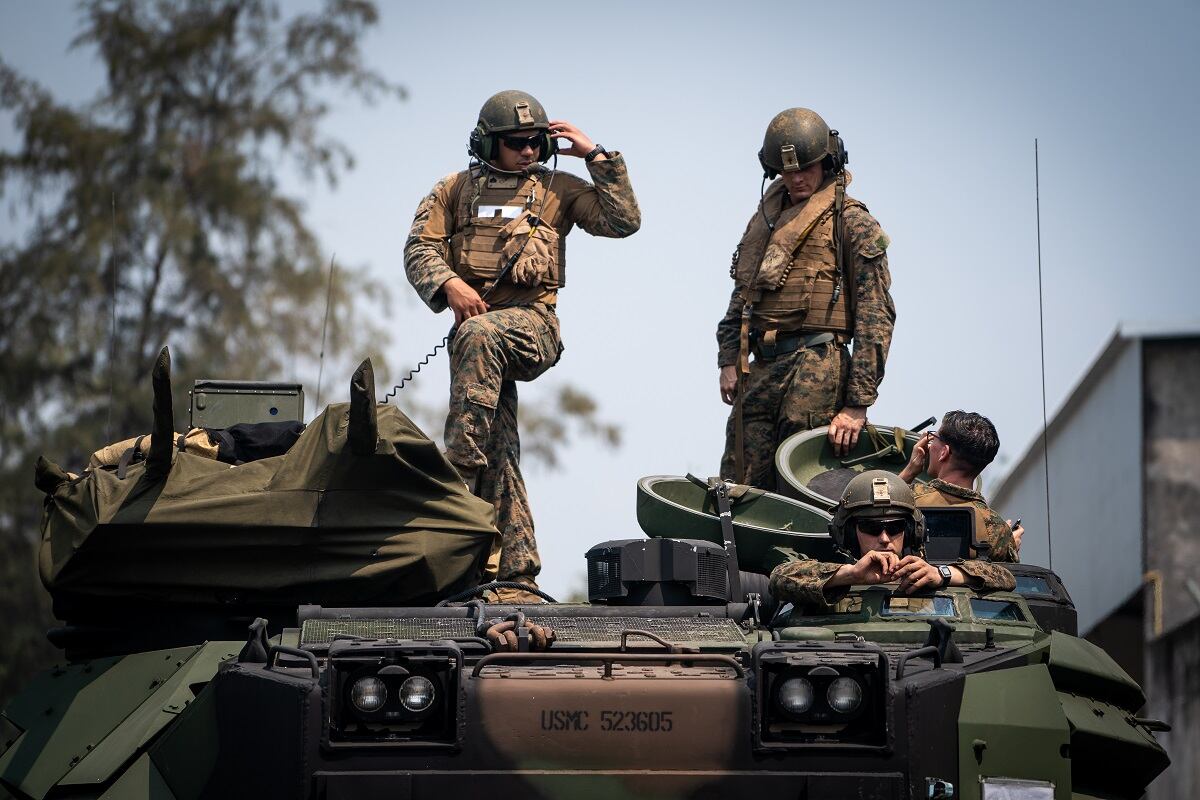ANNAPOLIS, Md. ― The future of new formations and how the Marine Corps is going to fight inside the enemy’s zone is being determined now.
That’s because a team of Marines is designing force packages for a host of new missions that will fall within the Corps’ Expeditionary Advance Basing Operations in a potential near-peer fight.
Those teams of Marines could range from a few dozen to a hundred, depending on the mission set.
And those missions will range from simple, quick refueling operations to temporary control of sea lanes in the Pacific Ocean or elsewhere that help push adversaries into positions where the Navy can launch its full weight at that opponent.
RELATED

Lt. Gen. Eric Smith, Marine deputy commandant for Combat Development and Integration, told an audience of military and industry officials here Tuesday at the National Defense Industrial Association Annual Expeditionary Warfare Conference that his recommendations are due to his boss in the coming weeks.
That’s when Commandant Gen. David Berger will review how that force structure will be built to fight the future fight.
Between now and December those decisions will be finalized, as Smith and his staff, which includes 13 “integrated process teams,” adjust through wargaming, experimentation and analysis of how the Corps will deliver the right kind of force ― as soon as early next year for real-world experiments and exercises.
That doesn’t mean that the staffing of those groups, from strike to refueling to electronic warfare teams operating in austere conditions, alone in the weapons engagement zone, will be final.
The exercise next year could be likened to an infantry patrol, Smith told reporters following the conference panel.
His objective is the Marine Corps force of 2030. By the end of the year, the teams will have “crossed the line of departure” with the “weapons,” or staffing and equipping, they plan to use.
But, much like on a foot patrol, they could encounter tanks, snipers, uncrossable rivers that will change what gear they use and how they fight.
That’s how the EAB teams will evolve, he said.
But the first decision, that Smith said Berger laid out in his Commandant’s planning guidance, released this summer, is force design changes.
Regarding how they set up the packages: Do they need more Marines here, less there? Marines with these capabilities? How many communicators? How many corpsman?
That’s what he’s delivering for the commandant’s consideration.
Smith spoke alongside his Navy counterpart, Vice Adm. James Kilby, deputy chief of naval operations for warfighting requirements and capabilities.
Navy is shifting its own forces through a force structure assessment that the Marines are also involved on, Kilby noted.
The past 18 years have focused on power projection for the fleet and how to do their missions most efficiently.
But that will change as the Navy rebalances to sea control and effective, rather than simply efficient ways to accomplish those goals.
An example that Smith pointed to was unmanned, autonomous connectors.
If the two services can find ways to send truly autonomous, unmanned surface connectors to resupply those EABs in the contested areas, and they’re cheap enough to send multiple connectors, then they’re worth it, Smith said.
The focus remains on supporting the fleet’s maritime warfighting mission, the three-star said.
Some of that is less sexy than sinking ships and storming beaches.
“It’s not just about how do I bring additional supplies to that force, but how does that force need less,” Smith said. “Can I make my own water, food, gas?”
Smith echoed his own comments from the September Modern Day Marine Military Exposition at Marine Corps Base Quantico, noting that Marines must take their full kit and complement with them, even on training exercises.
They cannot be at a location for training, get a call for a fight and not have the right gear needed to engage.
It will drive the type of gear and priorities that the Marines pursue, he said. And what they will bring has certain capabilities.
Smith said a priority for distributed operations is to be able to confuse the enemy through signatures, such as decoys.
“We can use decoys to look like anything else. It appears like there’s 20 when there are five,” he said. “I’m not interested in buying any system that doesn’t come with a decoy.”
Todd South has written about crime, courts, government and the military for multiple publications since 2004 and was named a 2014 Pulitzer finalist for a co-written project on witness intimidation. Todd is a Marine veteran of the Iraq War.




